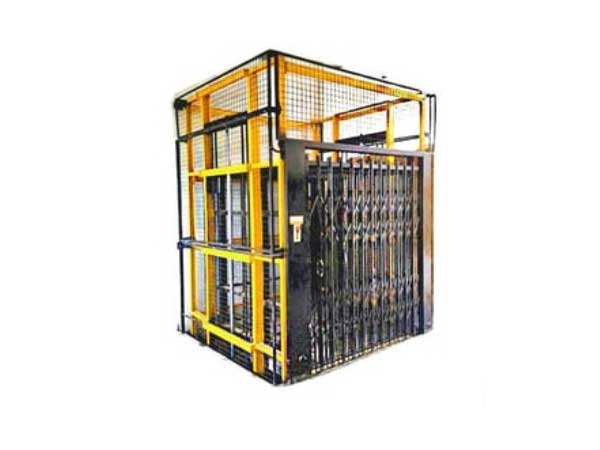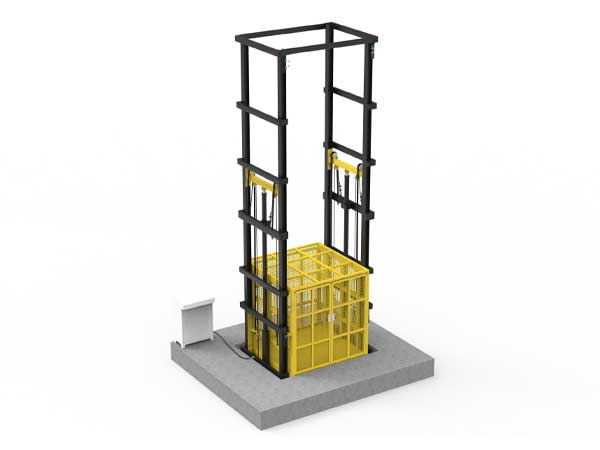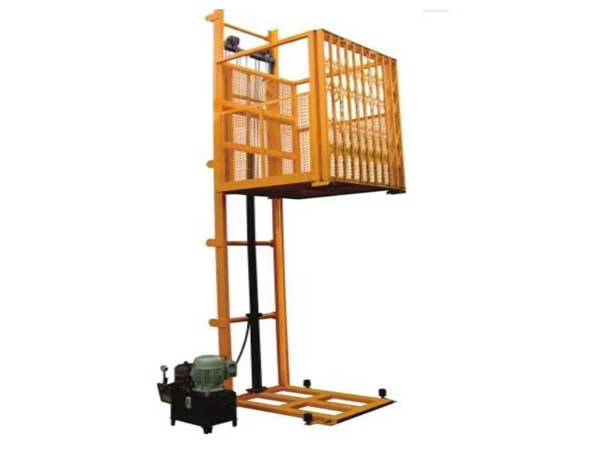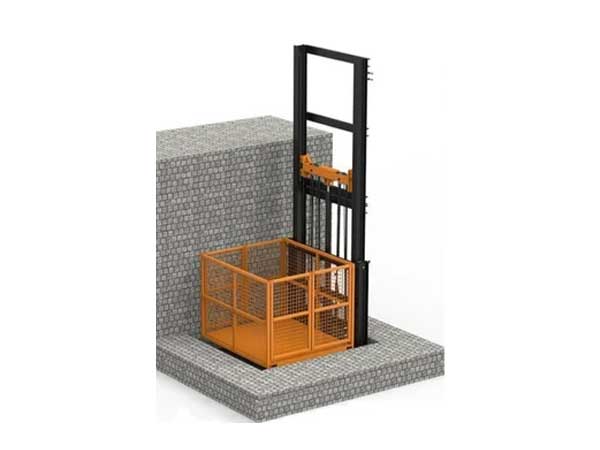Working Principle of Industrial Goods Lift: A Comprehensive Guide India 2026
In today’s fast-paced industrial world, the seamless movement of goods across different levels of a facility is vital for optimal productivity. Industrial goods lifts play a key role in ensuring the efficient transfer of heavy items, machinery, and raw materials between floors in manufacturing plants, warehouses, and distribution centers. This blog explores the working principle of industrial goods lifts, their types, applications, benefits, and the factors to consider when selecting the right lift for your facility.
Table of Contents
- What is an Industrial Goods Lift?
- How Does an Industrial Goods Lift Work?
- Key Components of Industrial Goods Lifts
- Types of Industrial Goods Lifts
- Applications of Industrial Goods Lifts
- Benefits of Using Industrial Goods Lifts
- Factors to Consider When Choosing an Industrial Goods Lift
- Conclusion
What is an Industrial Goods Lift?
An industrial goods lift, also known as a freight elevator, is a type of vertical transport system designed to carry heavy and bulky items between floors in an industrial or commercial setting. These lifts are built to withstand the demands of transporting large and often heavy products or materials such as machinery, equipment, and inventory. Unlike standard passenger elevators, industrial goods lifts are designed with safety, durability, and load capacity in mind.
How Does an Industrial Goods Lift Work?
The working principle of an industrial goods lift is simple yet highly effective. The lift uses a combination of mechanical, electrical, and hydraulic systems to move goods vertically between different levels of a building. Here’s a breakdown of the working mechanism:
- Power Source: The hydraulic system utilizes a pump powered by an electric motor, which pumps oil into a cylinder.
- Hydraulic Cylinder: The oil pressure lifts a piston connected to the lift platform. This allows the lift platform to move up and down.
- Control Valves: Valves control the flow of oil to ensure the lift operates smoothly and steadily
1. Hydraulic System (For Hydraulic Lifts)
- Traction Mechanism: Electric goods lifts typically use a motor to rotate a pulley system, which moves the lift’s platform via ropes or cables.
- Counterweight: A counterweight balances the load, making the lift more energy-efficient. When the platform goes up, the counterweight goes down, and vice versa.
2. Electric Motor System (For Electric Lifts)
- A user-friendly control panel inside the lift allows operators to select floors and load limits. Safety features, such as overload sensors, also prevent damage or accidents.
3. Control System
Key Components of Industrial Goods Lifts
To understand how industrial goods lifts work, it’s important to look at their key components:
- Lift Platform: The surface where goods are loaded. It is often larger than passenger lift platforms to accommodate bulky or oversized items.
- Drive Mechanism: Either hydraulic, electric, or mechanical systems that power the lift’s movement.
- Control Panel: The interface used by operators to control the lift’s movement, direction, and load capacity.
- Safety Features: These may include overload sensors, emergency stop buttons, and guard rails.
- Guide Rails: The system of rails that keeps the lift platform aligned and stable during travel.
- Doors: Automatic or manual doors that secure the lift shaft and prevent accidents.
Types of Industrial Goods Lifts:
There are several types of industrial goods lifts, each catering to specific needs in different industrial settings:
- These lifts are ideal for shorter vertical distances and are widely used in small to medium-sized warehouses and factories.
- Hydraulic lifts are energy-efficient and require less maintenance compared to other systems.
1. Hydraulic Lifts:
- Electric-powered lifts use a traction mechanism and are suitable for high-rise buildings or larger facilities that require heavy-duty lifting.
- They are more suited for longer vertical travel.
2. Electric Lifts:
- Pneumatic lifts use compressed air to move the lift platform up and down. They are often used for specialized industrial tasks or in places with limited space.
3. Pneumatic Lifts:
Applications of Industrial Goods Lifts
Industrial goods lifts find applications across various industries due to their versatility and efficiency:
- Manufacturing Facilities: Transport heavy machinery or large raw materials between floors.
- Warehouses and Distribution Centers: Move goods between different levels of storage racks.
- Construction Sites: Used to lift construction materials like bricks, cement, or equipment.
- Food Processing and Pharmaceutical Industries: Transport ingredients or equipment while maintaining hygiene and safety standards.
Benefits of Using Industrial Goods Lifts
Investing in an industrial goods lift can bring numerous advantages to a business:
- Increased Productivity: By reducing the need for manual labor and optimizing vertical movement, goods lifts speed up workflow.
- Safety: Industrial lifts are designed with safety in mind, reducing the risk of injury when handling heavy materials.
- Space Optimization: With multi-floor transport capabilities, industrial lifts help in maximizing the available space within the facility.
- Cost Efficiency: Reducing the need for manual labor and improving operational efficiency can lead to long-term savings.
Factors to Consider When Choosing an Industrial Goods Lift
Selecting the right industrial goods lift for your facility is crucial for optimizing operations. Here are some key factors to keep in mind:
- Load Capacity: Choose a lift that can accommodate the weight and size of your goods.
- Travel Distance: Consider how many floors the lift needs to cover.
- Speed: The speed at which the lift can move goods is important for efficiency, but must also be balanced with safety.
- Safety Features: Look for features like emergency stops, overload protection, and proper door safety systems.
- Maintenance and Durability: Choose a lift that is reliable and easy to maintain to avoid costly downtimes.
Conclusion:
Industrial goods lifts are integral to ensuring that goods are transported efficiently and safely within industrial facilities. Whether you're running a warehouse, manufacturing unit, or distribution center, understanding the working principle of these lifts will help you make informed decisions about the right solution for your business. By selecting the Titan Material Handling Pvt. Ltd. correct lift based on your specific needs and considering the factors that contribute to efficiency and safety, you can significantly improve your operations and productivity.
Call to Action: Ready to invest in a reliable industrial goods lift? Contact us today to explore a wide range of high-quality goods lifts tailored to your industry needs. Get expert advice and recommendations for a smooth, safe, and efficient vertical transport solution.





